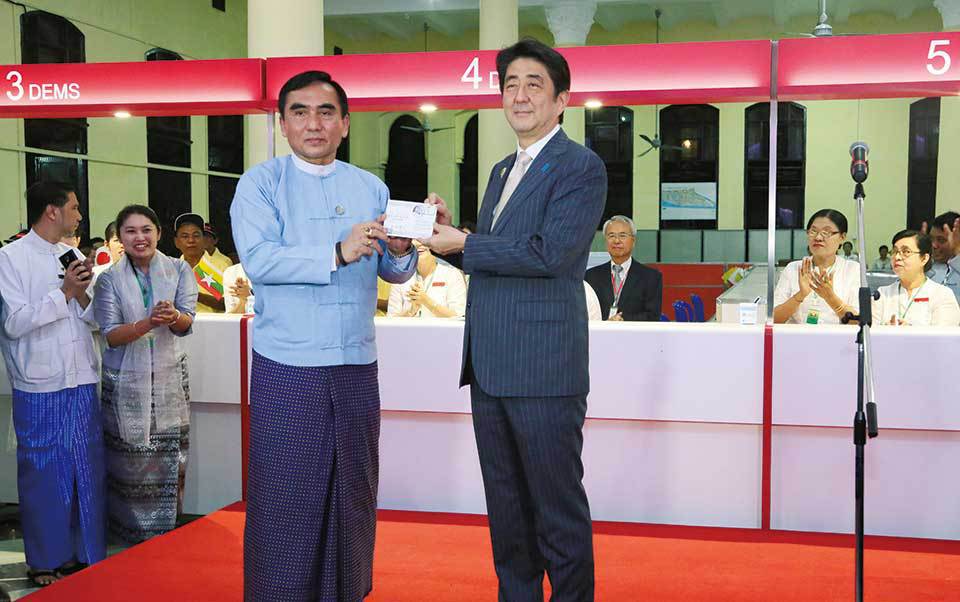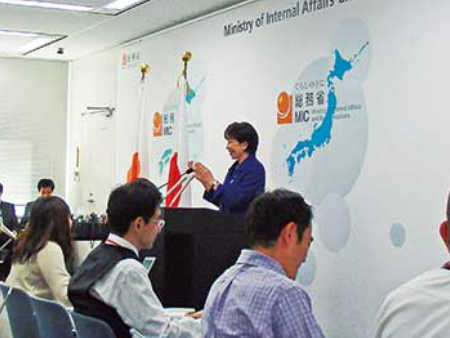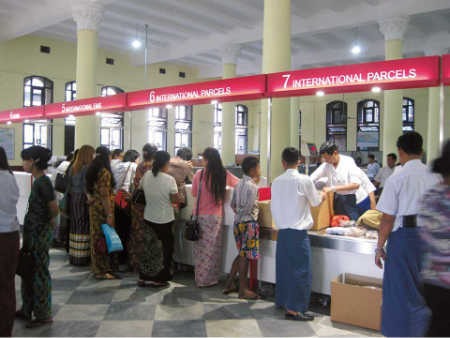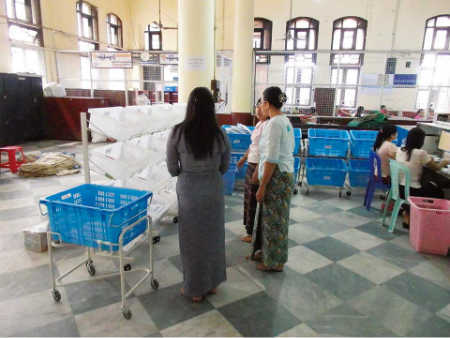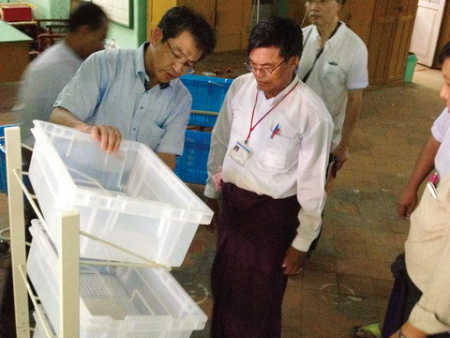The reputation of the postal services in Myanmar was not fully satisfactory among the people of Myanmar: “I sent a letter, but it was not delivered.” “I don’t use the mail because when I used it before it took too long.” In the face of complaints like these, the country’s government undertook to improve the quality of postal services. As it considered how to do so, it took note of Japan’s postal services, which provide fast and reliable deliveries and are an integral element of everyday life and business.
Myanmar decided to seek assistance from Japan, and in April 2014 the two countries confirmed their cooperation in the postal field. Japan Post Co., Ltd., was enlisted to participate in the project to improve the quality of Myanmar’s postal services through the provision of technical guidance.
Japan Post dispatched specialists to six major post offices in three principal cities: Nay Pyi Taw, the capital, Yangon, Myanmar’s most populous city, and Mandalay, the main city of the country’s central and northern region. And training sessions for Myanmar Post employees were held in Japan.
The specialists from Japan conducted a comprehensive review of Myanmar’s postal operations, from collection through sorting, forwarding, and delivery. Based on their findings, they introduced a system called “Kessoku,” a technical term meaning strict management of the arrival and departure times and clarification of operation times at post offices, aimed at optimizing schedules for accurate and efficient delivery. By reviewing all the collection and delivery routes and adjusting them in line with factors such as train timetables, they were able to achieve striking improvements: Delivery times for express registered mail between the three principal cities, which had averaged 2–3 days, were shortened to 1.1 days, and ordinary mail between the cities, which had taken 4–5 days, came to take an average of just 1.6 days. And the 10-day delivery ratio (the percentage of mail delivered within 10 days of being sent) rose from 87.8% to 99.3% in just eight months from the start of the project.
These improvements encouraged Myanmar’s postal employees and greatly enhanced their motivation. Shwe Tun Maung, the then postmaster at the Yangon General Post Office, declared that implementation of the “Kessoku” system had been effective.
The cooperative project also led to a change at the customer service counters in post offices. Previously the windows for selling stamps and for receiving items to be mailed were separate. With a view to customers’ convenience, these were brought together in a one-stop service counter. And the layout behind the counter was also completely redesigned for improved efficiency, with the introduction of the same type of sorting shelves as used in Japan. This reduced errors in handling mail upon receipt from customers and damage during the operations in post offices.
The contents of the guidance from Japan have been written up as a Myanmar-language operations manual and distributed to all the post offices (about 1,400) around the country, where efforts to improve service are progressing at a rapid pitch.
When Prime Minister Shinzo Abe visited Myanmar to attend the Japan-ASEAN summit meeting in November 2014, about half a year after the project was launched, he went to see the Yangon General Post Office. There he mailed a postcard to Minister for Internal Affairs and Communications Sanae Takaichi in Tokyo. The postcard arrived just four days later, confirming the dramatic improvement in Myanmar’s postal service.
Prime Minister Abe and Myanmar’s Minister for Communications and Information Technology U Myat Hein hold the postcard to Minister Takaichi at the Yangon General Post Office.
The postcard arrived four days later. Minister Sanae Takaichi shows it to journalists at a press conference.































































































































